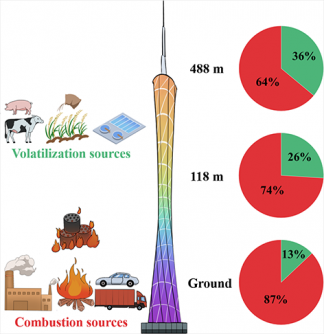URGENT UPDATE: New research from Jinan University reveals that combustion-related activities are the primary source of atmospheric ammonia in the Pearl River Delta (PRD) region of China. Published in Frontiers of Environmental Science & Engineering, this pivotal study highlights alarming trends regarding air quality and public health.
Conducted at the iconic Canton Tower, the tallest structure in the PRD, researchers collected fine particulate matter (PM 2.5) samples at three critical heights: ground level, 118 m, and 488 m. The findings indicate that ammonia levels—key precursors to harmful air pollution—are significantly influenced by combustion activities, underscoring the urgent need for environmental action.
The study discovered average ammonia concentrations of 2.7 ± 1.4 μg/m³ at ground level, 3.0 ± 1.8 μg/m³ at 118 m, and 2.6 ± 1.7 μg/m³ at 488 m, with no significant differences among these heights. However, the stable nitrogen isotope composition (δ 15 N-NH 4 +) showed a significant correlation with height, indicating varying sources of ammonia emissions.
Using the Bayesian Isotope Mixture Model, researchers identified the sources contributing to ammonia emissions at ground level: agriculture (9.9% ± 4.4%), waste (8.3% ± 5.5%), vehicles (29% ± 8.0%), biomass burning (16% ± 2.2%), NH 3 slip (25% ± 6.0%), and coal combustion (12% ± 3.4%). The study revealed that contributions from local activities remain relatively stable at higher altitudes, thereby reducing their direct impact on air quality.
This critical research raises pressing questions about the effects of combustion emissions on public health and air quality management in one of China’s most densely populated regions. With the PRD being a hub for industry and agriculture, these findings are particularly alarming as they highlight the significant role of local combustion sources in exacerbating air pollution.
As authorities seek to combat air quality issues, understanding the dynamics of ammonia emissions is essential for developing effective policies. The implications of these findings are profound, impacting not only environmental regulations but also public health initiatives aimed at reducing fine particulate matter exposure.
For further details, the full study is available [here](https://journal.hep.com.cn/fese/EN/10.1007/s11783-025-1997-4). Stay tuned as we continue to monitor this developing situation, which has critical implications for air quality in urban centers across China and beyond.






